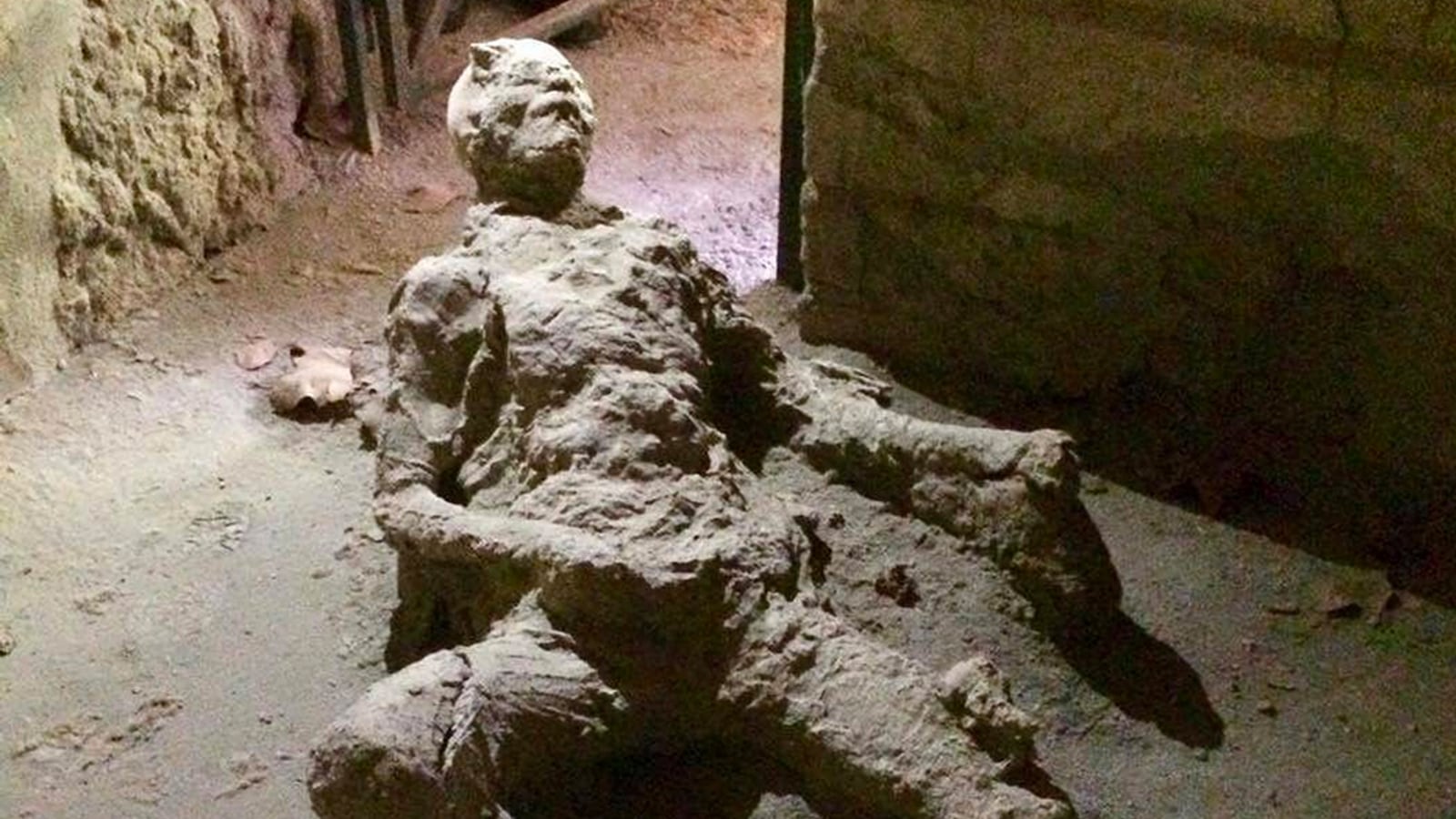The cyber world is all hot and bothered this week with the emergence of a photograph that seems to show a Pompeii man frozen in time while masturbating. The unidentified man, an unfortunate victim of the eruption of Mount Vesuvius in 79 CE, has gained the grudging respect of twitter users who wryly noted that he “held on to the end” and died “holding his loved ones.” If the analysis holds, this man certainly had a clear plan about how to spend his final moments.
This isn’t the first time Pompeii has gained a reputation for debauchery. In the 18th century, archeologists were scandalized by the sexually explicit artwork that adorned the walls of the city’s residents. The artwork at Pompeii – including oversized phalluses --was so shocking to modern viewers that in 1819, when Francis I of Naples visited the Pompeii exhibition, he ordered the erotic art to be locked away in a secret chamber so that only those of an appropriate age could view it. Today minors are only allowed entry to the “Gabinetto Segreto” (Secret cabinet) in the National Archeological Museum in Naples, if a guardian is present (or they have written permission).
Excavations at Pompeii uncovered a number of brothels, the most famous of which -- the Lupanare (wolf’s den)—was built specifically for this purpose. This wasn’t the case with all ancient brothels which, as Professor Sarah Bond has written in Trade and Taboo, could set up shop in inns, taverns and even mills. The Lupanare contained ten rooms, each of which was furnished with a stone bed and mattress that were separated from an antechamber by a curtain.
The brothel’s walls are adorned with frescos that depict graphic sexual activity. Some scholars have hypothesized that the sex scenes are advertisements for available services while others think that the artwork misrepresented ancient sexual congress in the way that modern pornography misrepresents your average sexual encounter. Whether or not the paintings are idealized, the patrons of the brothel seem to have had a good time. There are over one hundred individual pieces of graffiti in the Lupanare, about a third of which are sexually explicit. Some are straightforward, “Here I fucked a lot of girls” others complimentary “Sollemnes, you fuck well.”
Sexual graffiti is not only preserved in the brothels. Scratched above a seat outside the city’s Marine Gate is the advice “if anyone wants a fuck, he should look for Attice – costs 4 sesterces” The most shocking thing about the sexual activity in Pompeii is not the artwork, but the price. Using the graffiti at Pompeii scholars have been able to deduce that sex could be had for half a liter of wine and a couple of loaves of bread.
Precisely because sex was so cheap, masturbation seems to have been relatively uncommon in the ancient world. As Kyle Harper has written in From Shame to Sin “the ubiquity of slaves meant pervasive sexual availability…slaves played something like the part that masturbation has played in most cultures.” Brothels were for those who weren’t rich enough to have a personal sex slaves. Harper quotes the following ancient advice, “If your loins are swollen, and there’s some homeborn slave boy or girl around where you can quickly stick it, would you rather burst with tension? Not I – I like an easy lay.”
As a result masturbation was, with some notable exceptions, comparably uncommon. A story about the Cynic philosopher Diogenes records that when a prostitute who regularly visited him was delayed, he took matters into his own hands. Diogenes was known for his fondness for public masturbation. When, on one occasion, he was chastised for this he replied that he wished “it were as easy to banish hunger by rubbing my belly.” Broadly speaking, in Greco-Roman art and literature, masturbation is pathetically comic. The Greeks and Romans didn’t condemn masturbation, as later Christian writers would, and, according to Thomas Laquer masturbation didn’t truly become a sin until the eighteenth century. It was from this point onwards that myths about masturbation-induced blindness started to proliferate.
All of this aside, it’s unlikely that Pompeii’s frozen man has been caught in the act, as it were. Many of Pompeii’s victims are preserved with stiff muscles almost as if they were grasping things. This phenomenon was caused by a sudden surge in heat. Dr. Petrone, a volcanologist who has been working on Pompeii’s victims for over two decades, told the BBC that the man was killed by “the hot pyroclastic surge.”
The science is clear that this internet phenomenon did not die in a final act of self-gratification. However, given the debauchery of ancient Pompeii if he had, it would hardly seem surprising.






